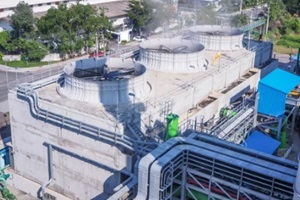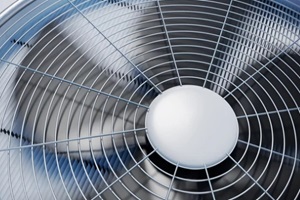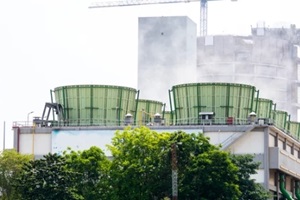 As a building engineer or facility manager, you’re constantly seeking ways to optimize your operations, reduce costs, and improve overall efficiency. One area that often presents significant opportunities for savings is your cooling tower system.
As a building engineer or facility manager, you’re constantly seeking ways to optimize your operations, reduce costs, and improve overall efficiency. One area that often presents significant opportunities for savings is your cooling tower system.
Cooling towers play a crucial role in maintaining comfortable indoor temperatures and supporting critical HVAC processes. However, inefficient operation can lead to soaring energy bills, excessive water consumption, and premature equipment failures.
These inefficiencies not only impact your bottom line but also contribute to strain on manpower, operation continuity, and even reputation.
Consequences of Neglecting Your Cooling Towers
The consequences of an inefficient cooling tower system can certainly put a dent in your operating budget. Increased energy consumption not only drives up utility costs but also contributes to a larger carbon footprint.
Scale buildup, corrosion, and biological fouling can significantly impair heat transfer efficiency, forcing your system to work harder to achieve the desired cooling capacity. This excess strain leads to higher energy bills, accelerated equipment wear, and potentially costly breakdowns or replacements that disrupt operations.
In addition, inefficient water management in cooling towers can result in excessive water consumption, adding to your operational expenses and straining precious natural resources. Poorly maintained systems may also fail to meet regulatory compliance standards, putting your facility at risk of fines or legal consequences that could tarnish your reputation and jeopardize your operations.
Driving Down Cooling Costs
The good news is that implementing effective energy efficiency strategies for your cooling towers can help mitigate these challenges and unlock substantial cost savings while improving overall system performance. By partnering with a knowledgeable water treatment professional, you can develop a comprehensive plan tailored to your facility’s unique needs.
Here are four key strategies to consider.
Optimize Water Reuse
Cycles of concentration refers to the number of times water can be recycled through the cooling tower before being discharged. As water evaporates from the cooling tower, dissolved minerals and salts become more concentrated.
 Once the amount of dissolved solids reaches a maximum set point, the cooling tower will “bleed” and discharge water to drain in order to control scaling potential. Optimizing cycles through effective water treatment allows you to maximize cycles or water reuse, reducing the amount of electricity required for makeup water pumping, and ultimately lowering your monthly water bills.
Once the amount of dissolved solids reaches a maximum set point, the cooling tower will “bleed” and discharge water to drain in order to control scaling potential. Optimizing cycles through effective water treatment allows you to maximize cycles or water reuse, reducing the amount of electricity required for makeup water pumping, and ultimately lowering your monthly water bills.
This strategy not only saves you money but also promotes sustainability by conserving precious water resources.
Maintain Peak Heat Transfer
Heat transfer efficiency, which refers to the ability of the cooling tower system to effectively transfer heat from the warm process water to the air stream, directly impacts energy consumption.
Poor heat transfer requires more energy to achieve the desired cooling capacity which ultimately leads to the system running longer and harder. Scale buildup, corrosion, and biological fouling on heat transfer surfaces reduce heat transferability by acting as insulating barriers on pipe and equipment surfaces.
A comprehensive water treatment program prevents these fouling issues to minimize energy loss. Proper water treatment will also prevent a reactive need for emergency cleaning of equipment like heat exchangers and cooling towers which can also be an unforeseen expense.
Extend Equipment Life
Corrosion in cooling towers occurs due to the presence of dissolved oxygen, chlorides, and other corrosive species in the recirculating water, along with galvanic interactions between dissimilar metals in the system.
Failure to take measures to slow corrosion can have a significant negative impact on both operating and capital expenditure budgets. Corrosion can lead to frequent repairs or replacements of piping or equipment which can drive up expenses.
In some cases catastrophic failures related to corrosion can lead to emergencies, downtime, and a strain on the use of your building’s manpower as well. While you cannot undo the effects of corrosion, a water treatment program can help prevent and reduce corrosion which will extend current equipment life and delay capital outlays for new equipment.
Partner for Success
 At Tower Water, we understand the importance of energy-efficient cooling tower operations for your bottom line and sustainability goals. Our team of experienced professionals specializes in developing tailored water treatment programs that address the unique challenges of your facility.
At Tower Water, we understand the importance of energy-efficient cooling tower operations for your bottom line and sustainability goals. Our team of experienced professionals specializes in developing tailored water treatment programs that address the unique challenges of your facility.
With our state-of-the-art equipment, automated reporting systems, and preventative maintenance approach, we can help you implement the strategies outlined above and more. Our expertise in scale prevention, microbiological control, and corrosion inhibition ensures that your cooling towers operate at peak efficiency, reducing energy consumption and extending equipment life.
Don’t settle for inefficiencies that drain your resources and compromise your facility’s performance. Take the first step towards sustainable, cost-effective cooling tower operations by partnering with Tower Water. Contact us today, and let our experts guide you on the path to lower bills, better performance, and a greener future.
